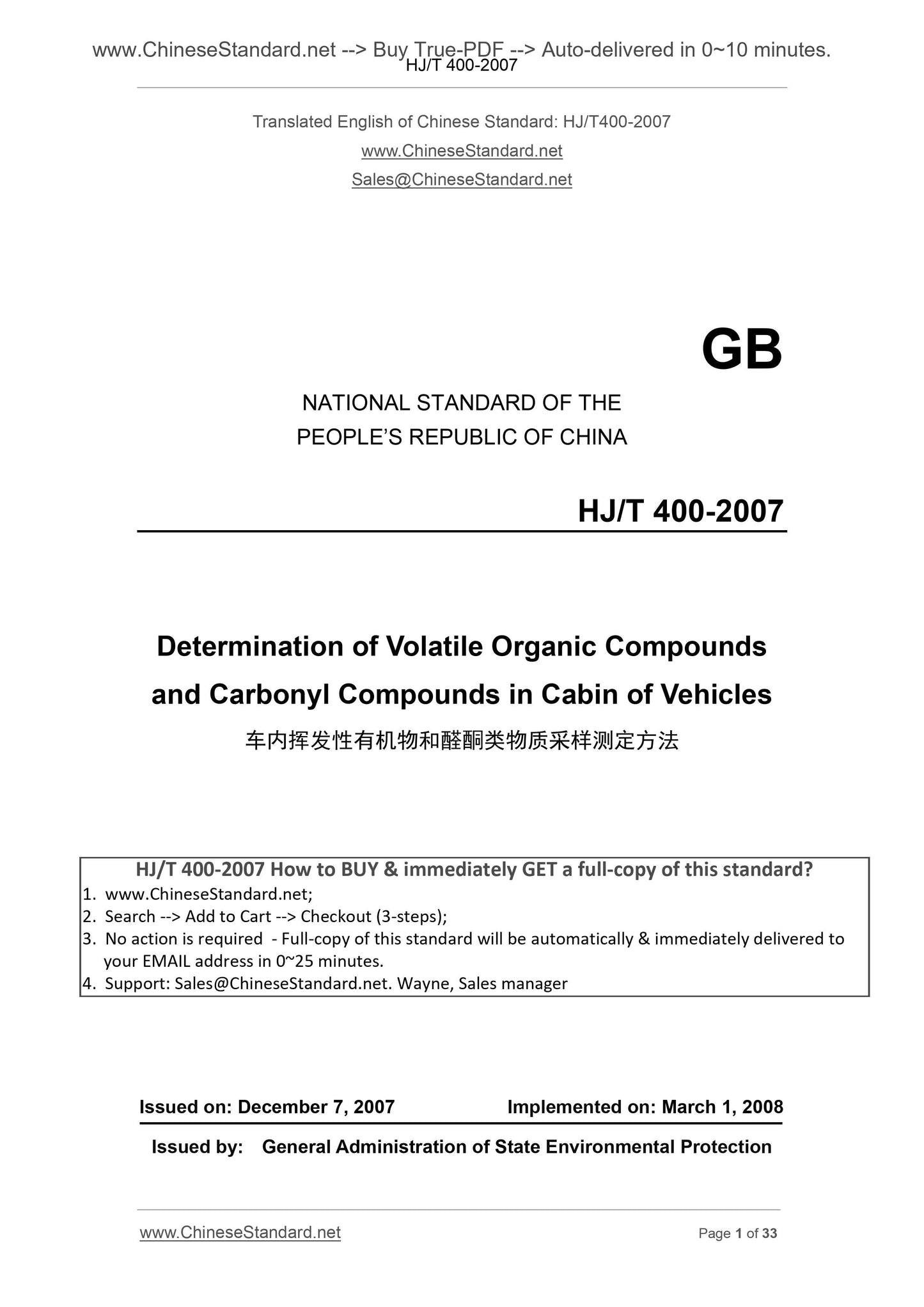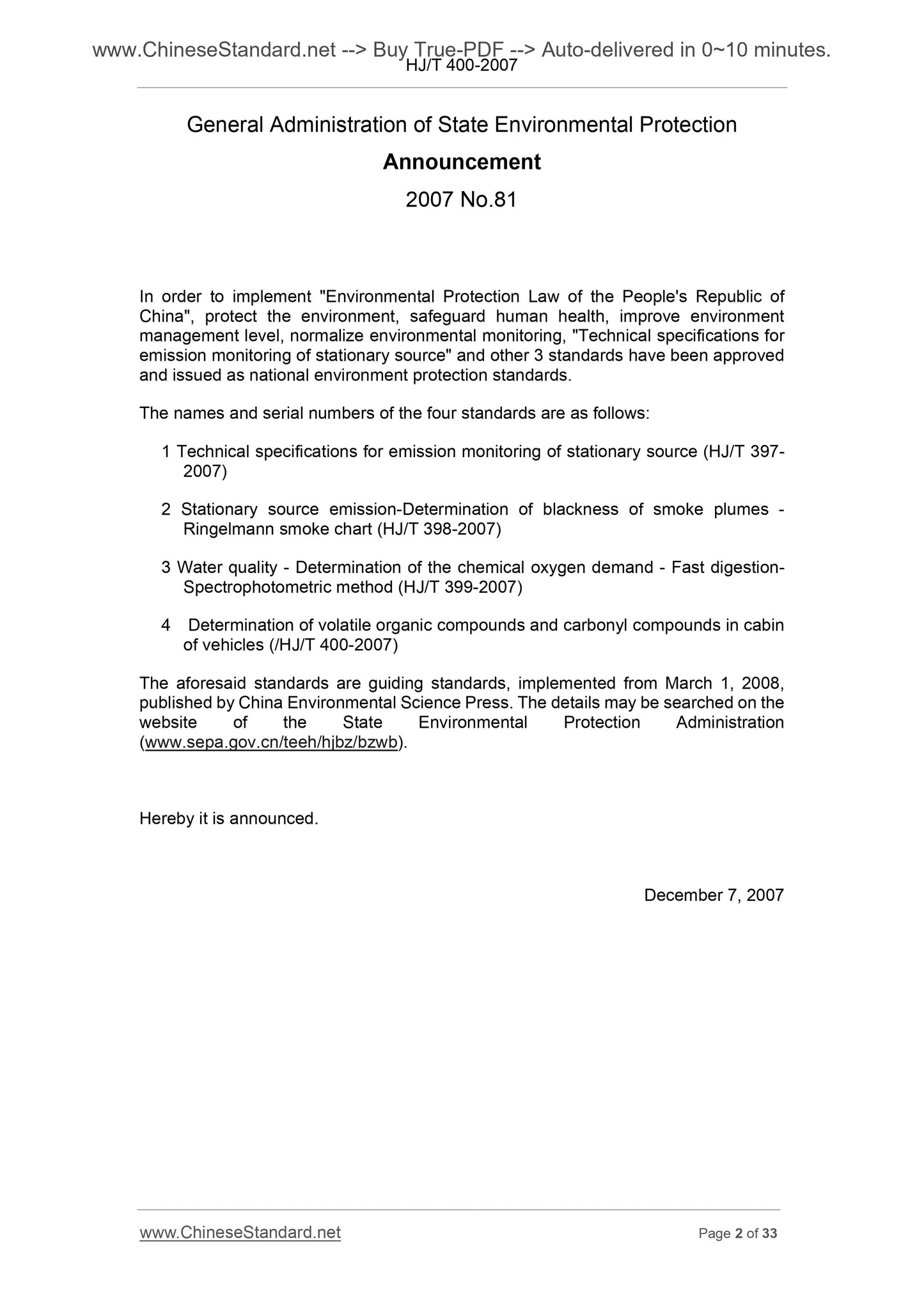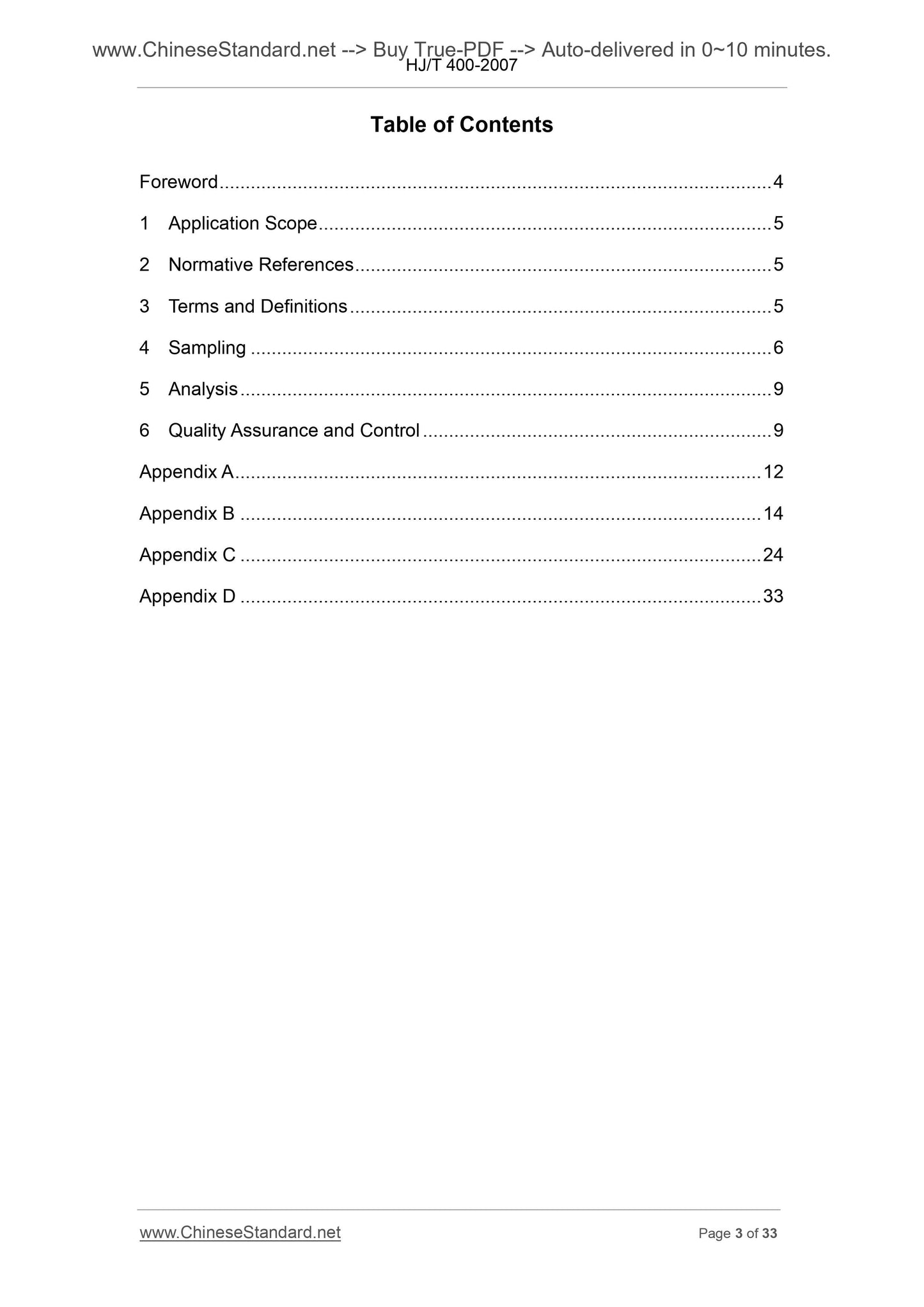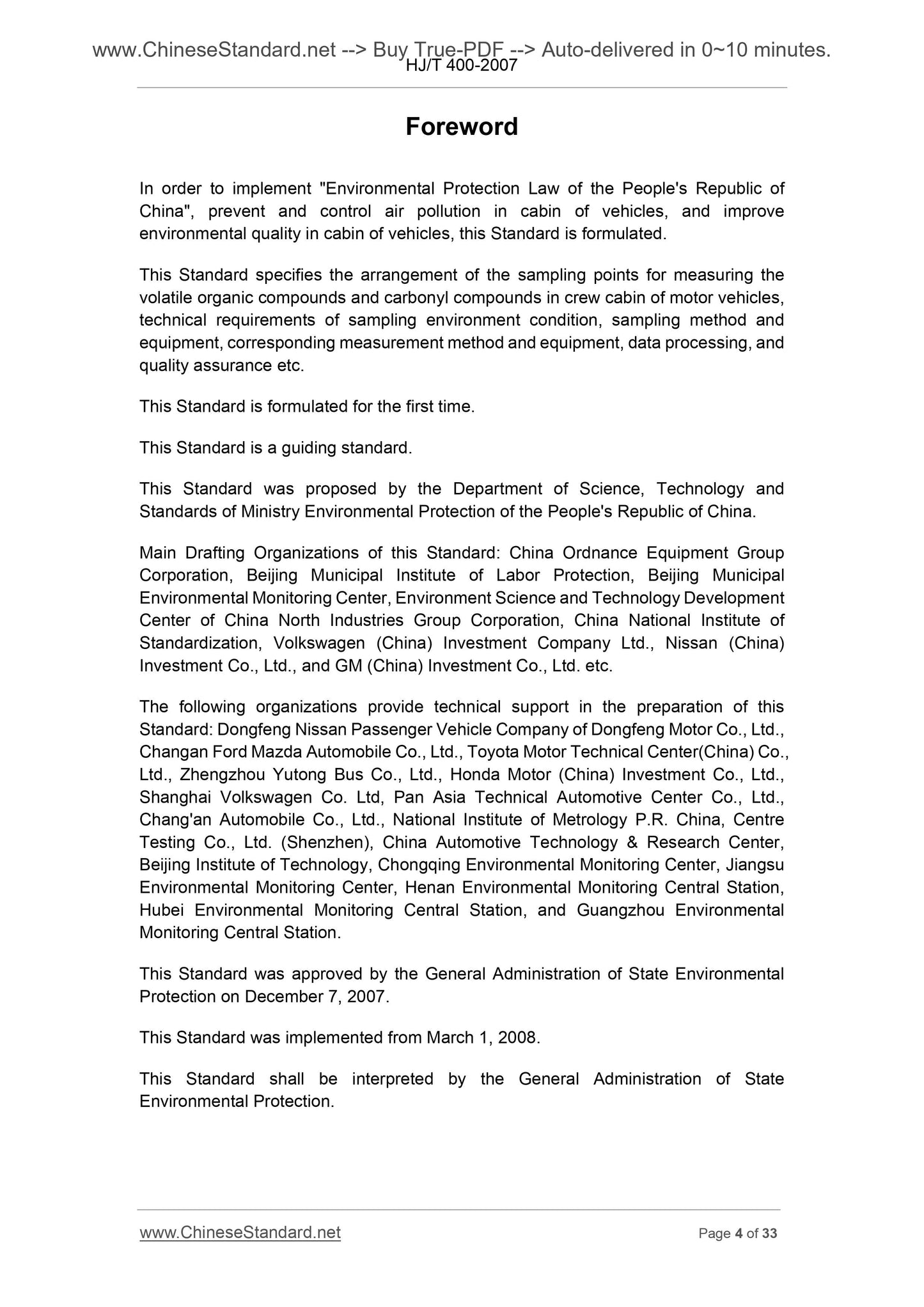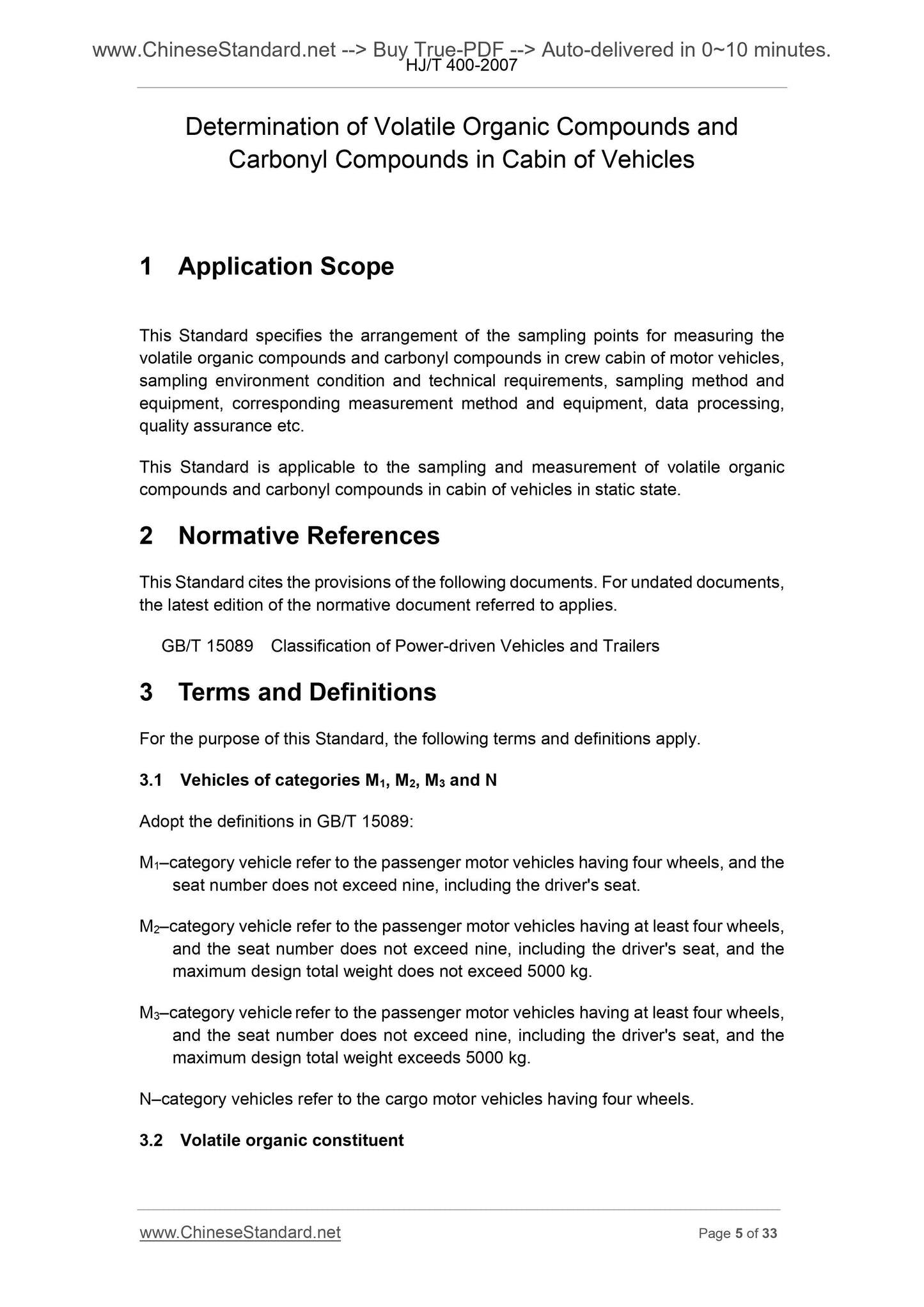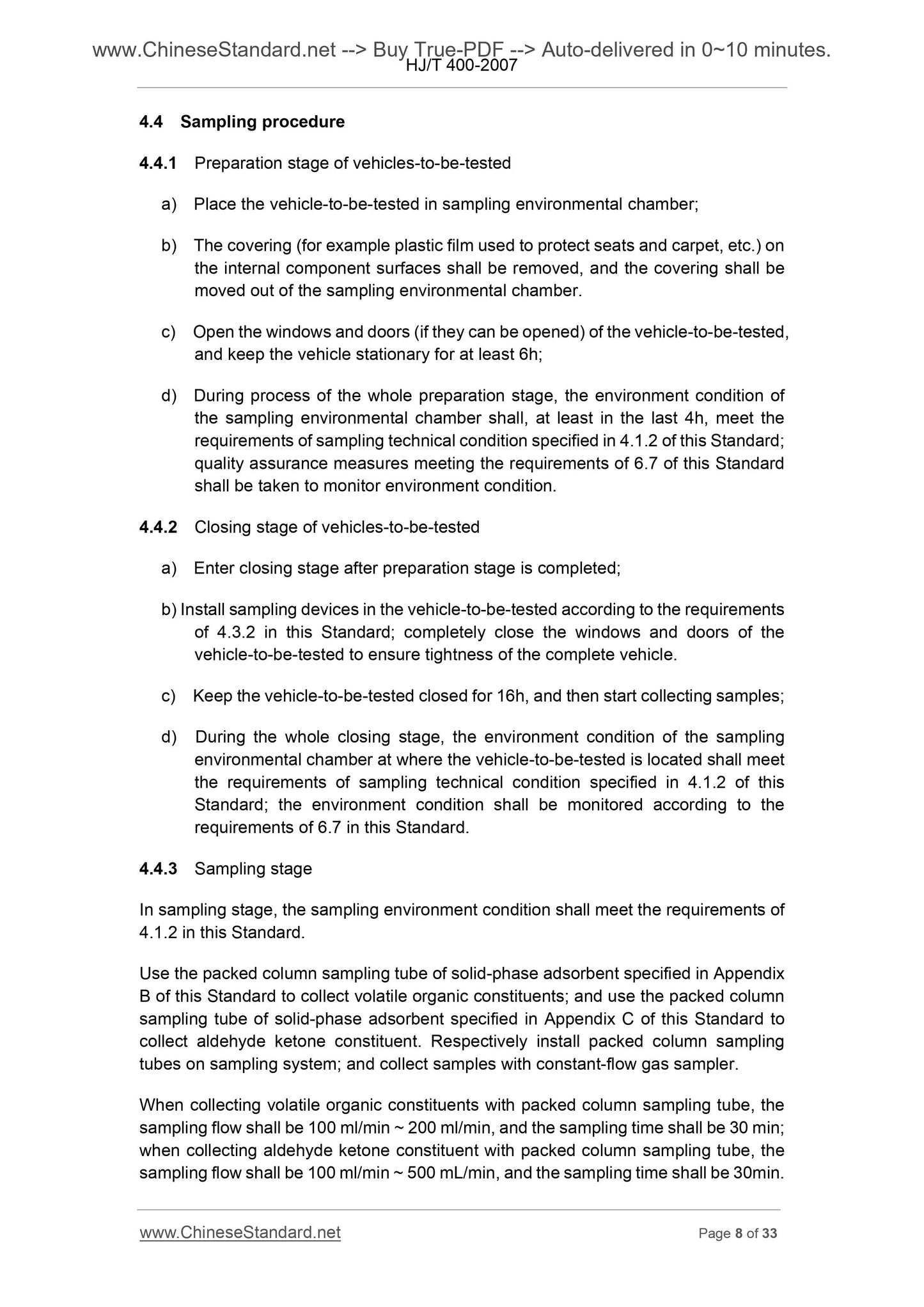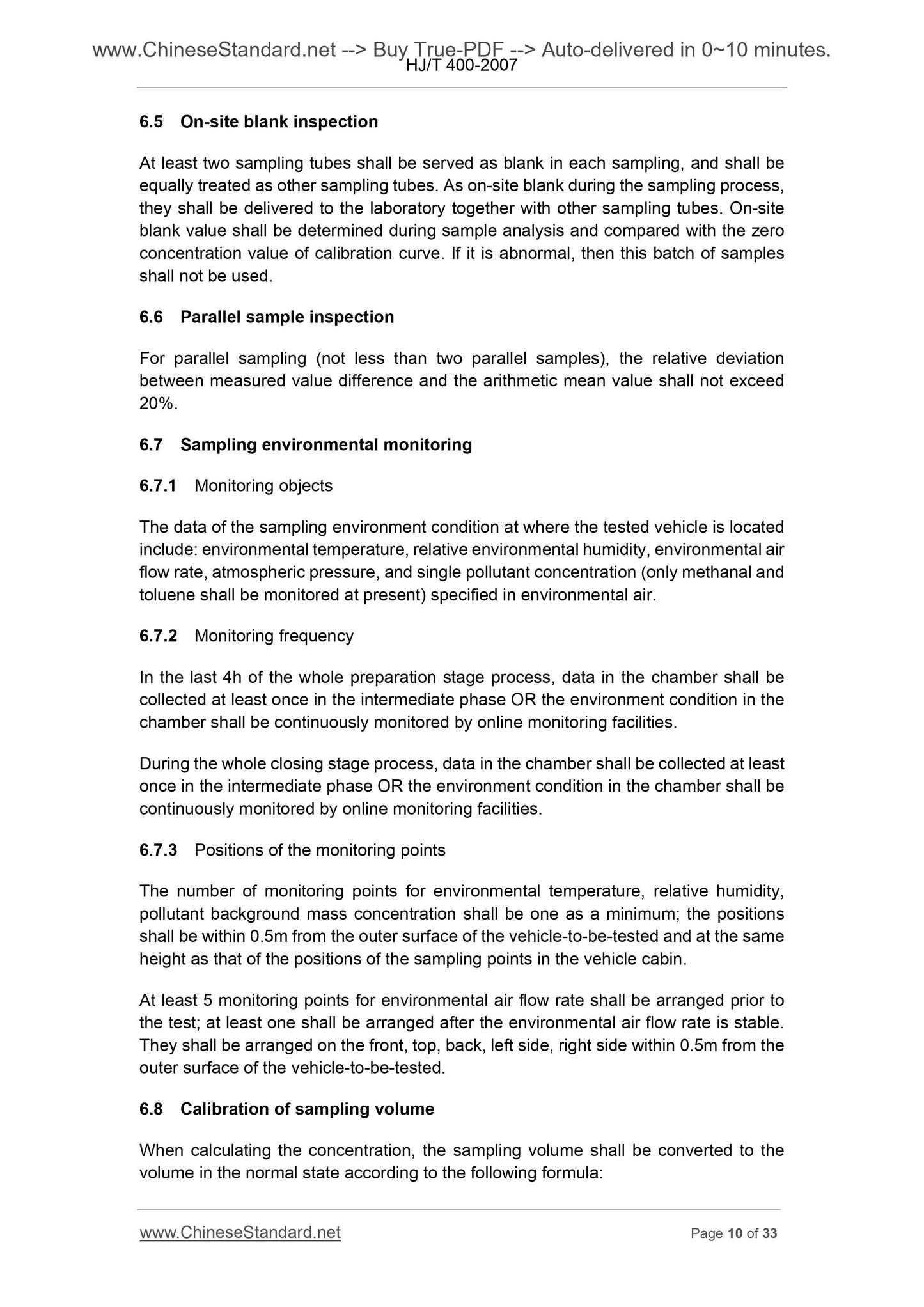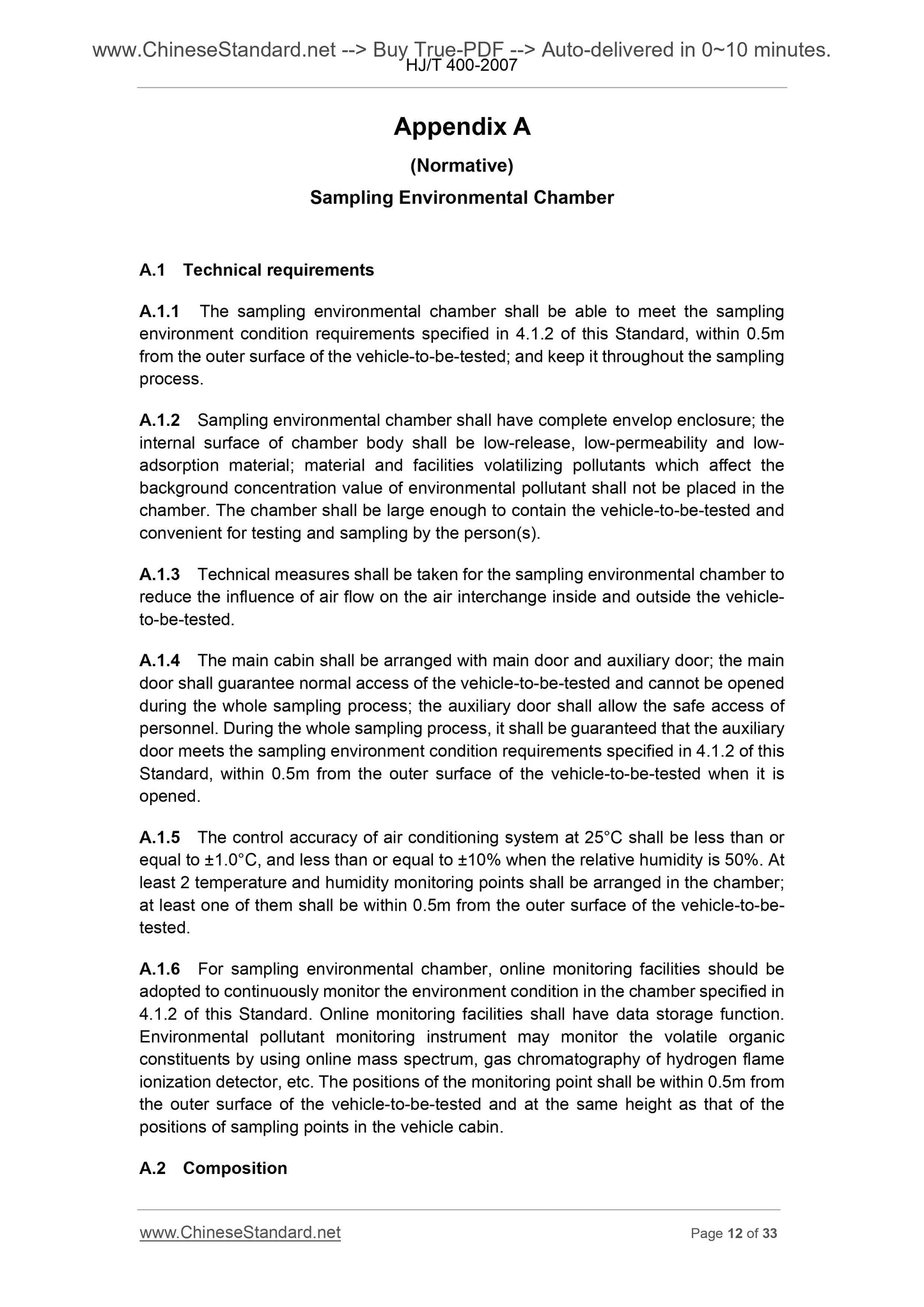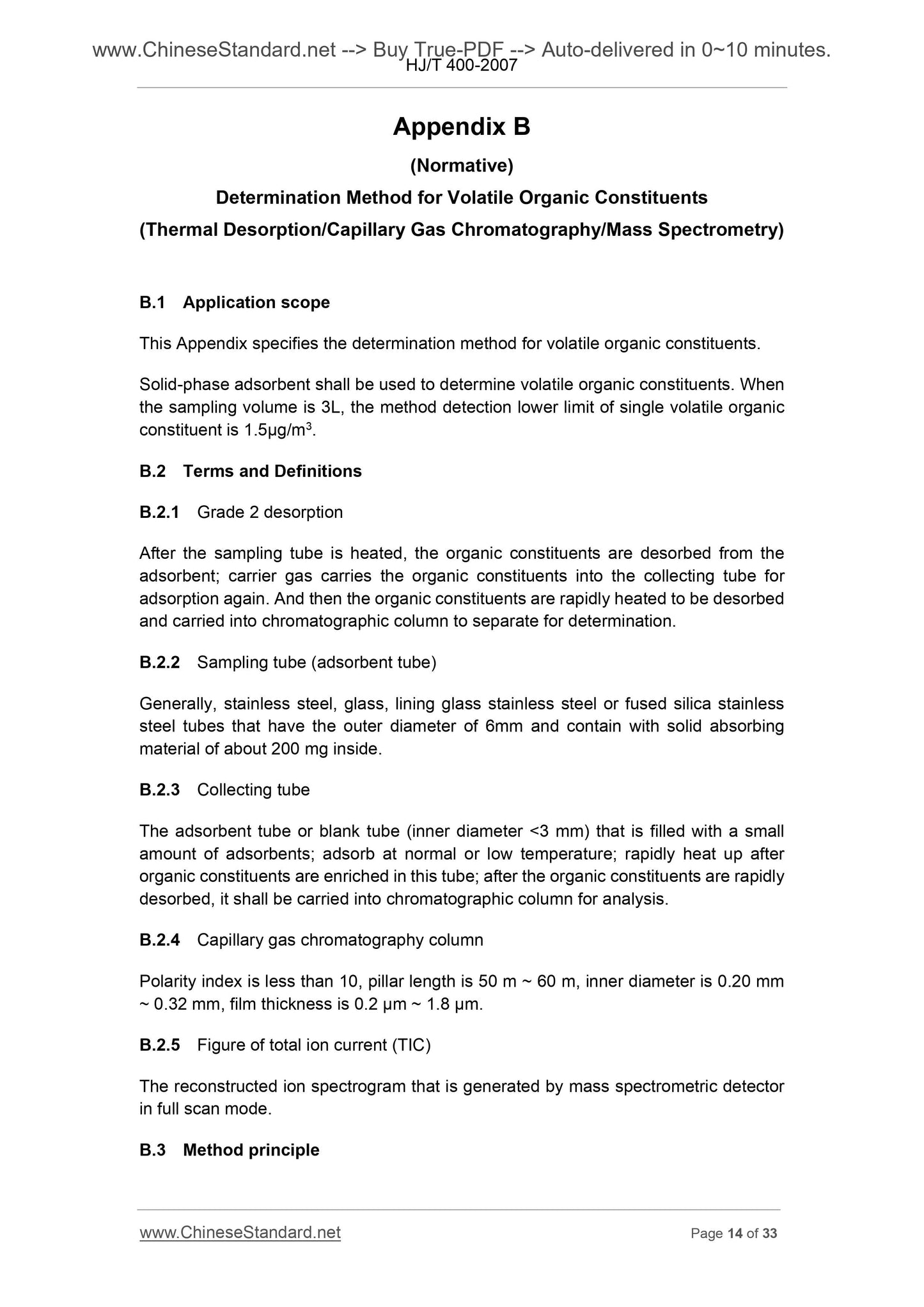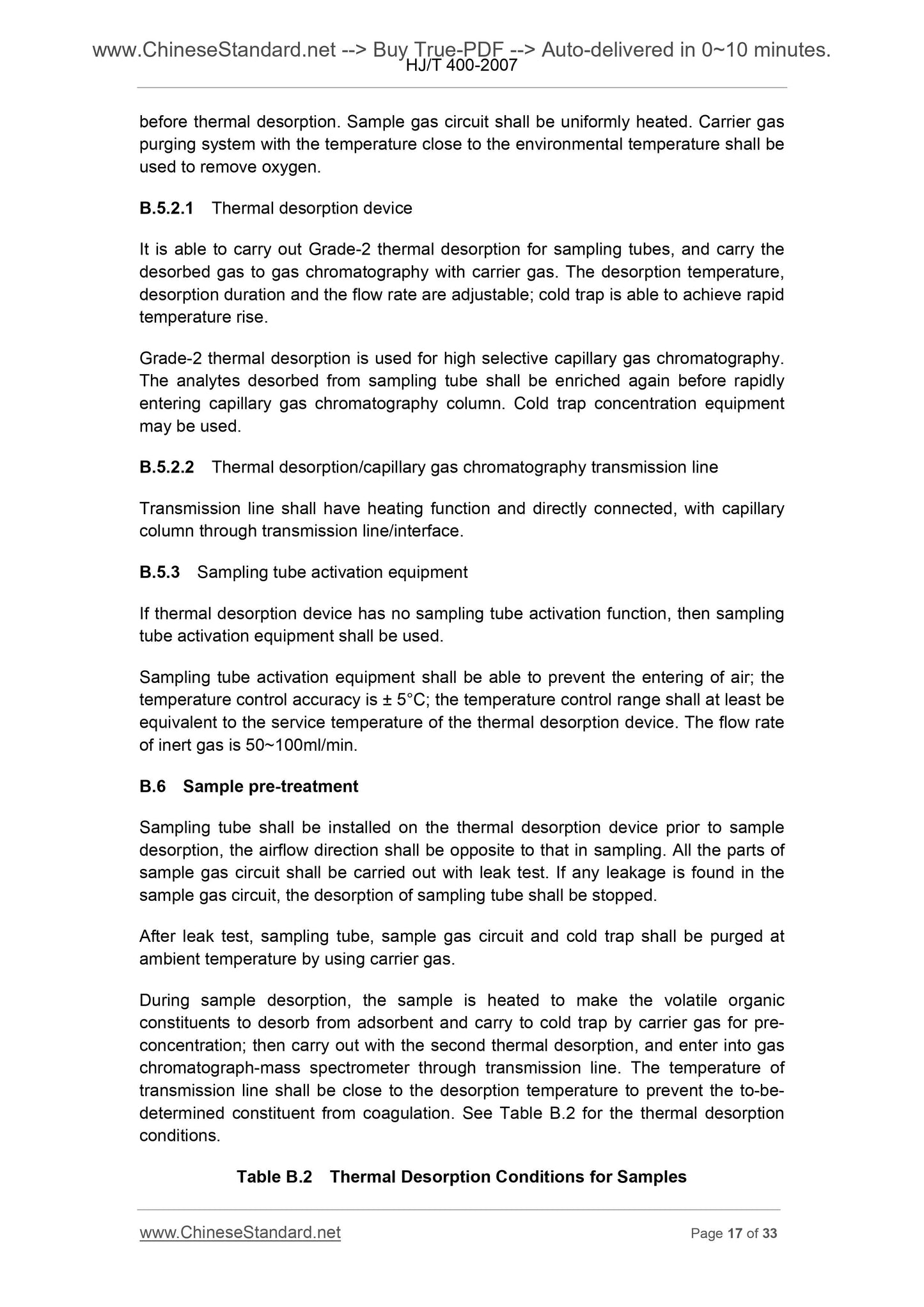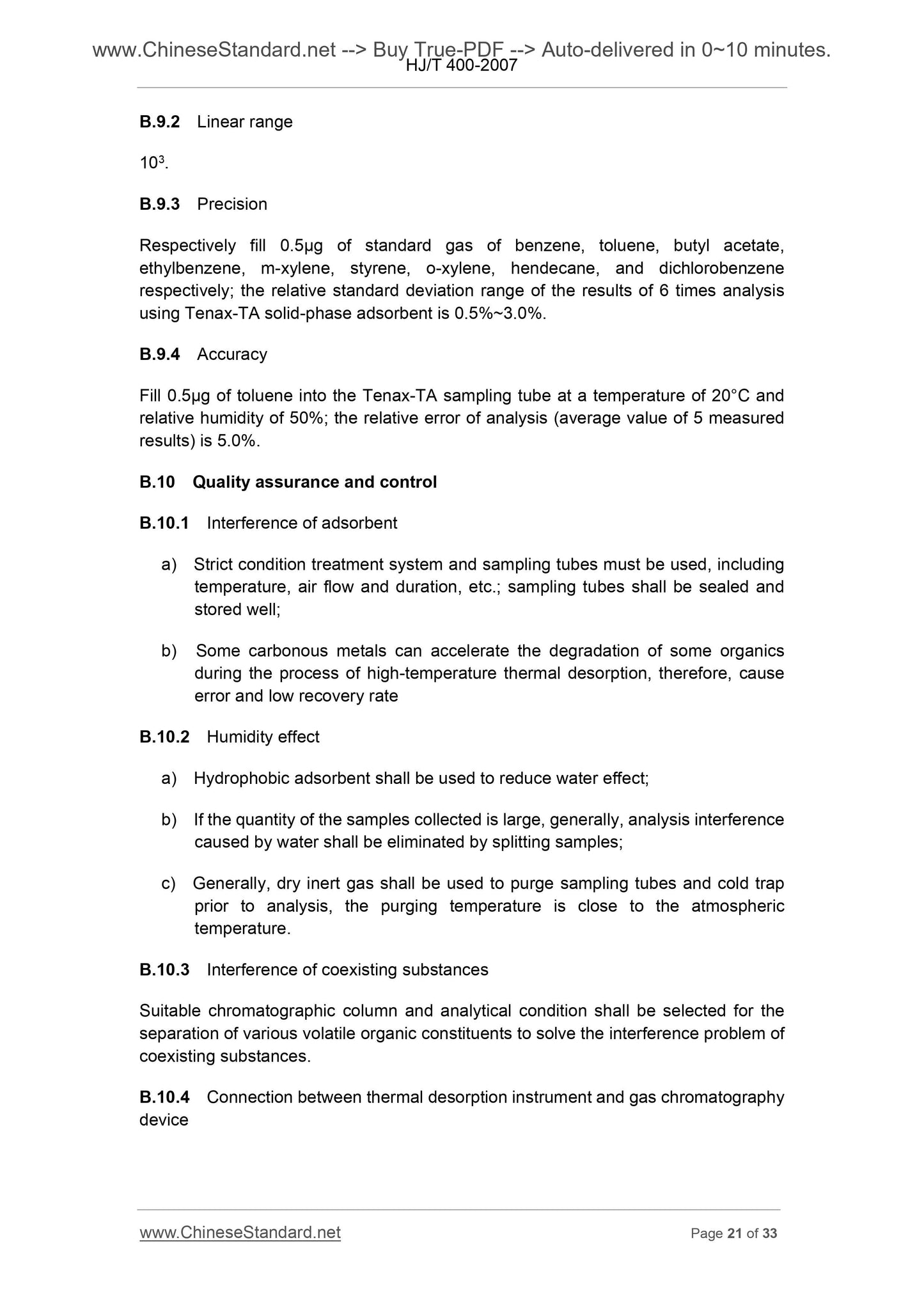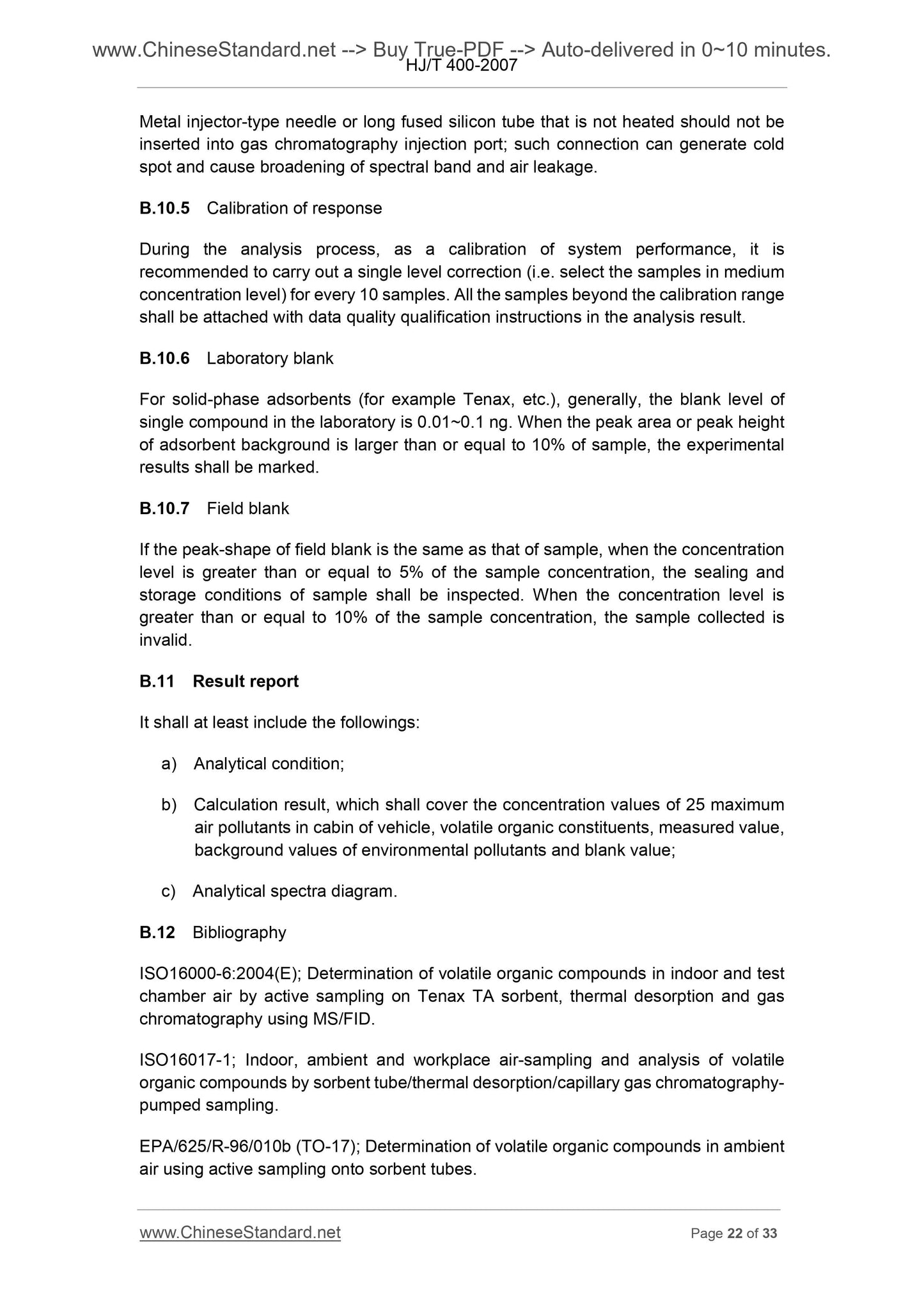1
/
of
12
www.ChineseStandard.us -- Field Test Asia Pte. Ltd.
HJ/T 400-2007 English PDF (HJ/T400-2007)
HJ/T 400-2007 English PDF (HJ/T400-2007)
Regular price
$145.00
Regular price
Sale price
$145.00
Unit price
/
per
Shipping calculated at checkout.
Couldn't load pickup availability
HJ/T 400-2007: Determination of volatile organic compounds and carbonyl compounds in cabin vehicles
Delivery: 9 seconds. Download (and Email) true-PDF + Invoice.Get Quotation: Click HJ/T 400-2007 (Self-service in 1-minute)
Newer / historical versions: HJ/T 400-2007
Preview True-PDF
Scope
This Standard specifies the arrangement of the sampling points for measuring thevolatile organic compounds and carbonyl compounds in crew cabin of motor vehicles,
sampling environment condition and technical requirements, sampling method and
equipment, corresponding measurement method and equipment, data processing,
quality assurance etc.
This Standard is applicable to the sampling and measurement of volatile organic
compounds and carbonyl compounds in cabin of vehicles in static state.
Basic Data
| Standard ID | HJ/T 400-2007 (HJ/T400-2007) |
| Description (Translated English) | Determination of volatile organic compounds and carbonyl compounds in cabin vehicles |
| Sector / Industry | Environmental Protection Industry Standard (Recommended) |
| Classification of Chinese Standard | Z11 |
| Classification of International Standard | 13.040.30 |
| Word Count Estimation | 23,244 |
| Date of Issue | 2007-12-07 |
| Date of Implementation | 2008-03-01 |
| Quoted Standard | GB/T 15089 |
| Regulation (derived from) | SEPA Notice No. 81 of 2007 |
| Issuing agency(ies) | Ministry of Ecology and Environment |
| Summary | This standard specifies the measurement of volatile organic compounds and vehicle occupant compartment aldehydes and ketones sampling point settings, environmental conditions, technical requirements for sampling, sampling methods and equipment, the corresponding measurement methods and equipment, data processing, quality assurance, and so on. This standard applies to the vehicle is stationary state, the interior of volatile organic compounds and aldehydes and ketones sampling and measurement. |
Share
